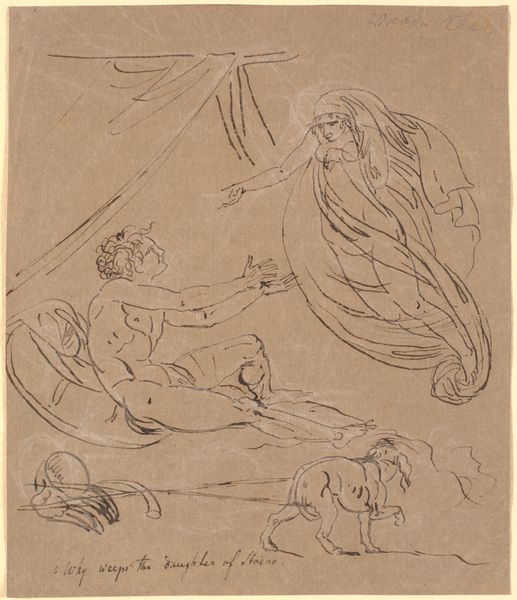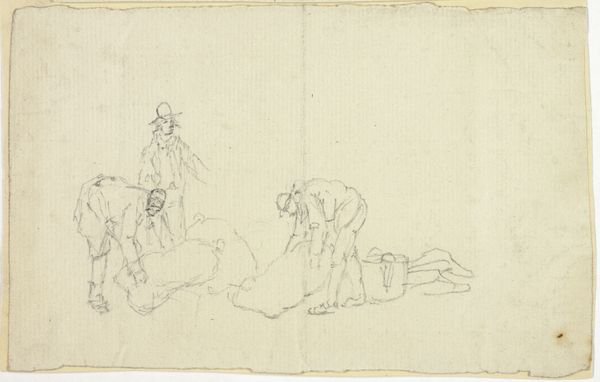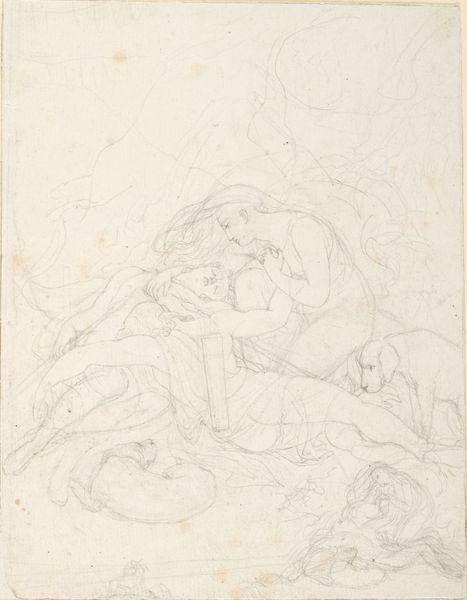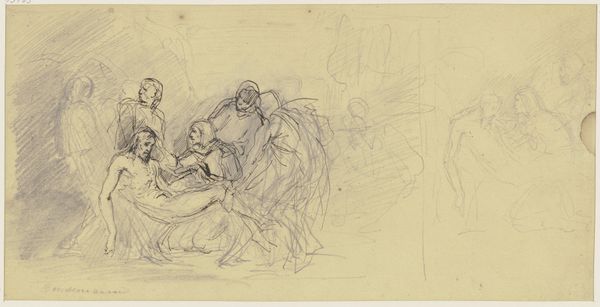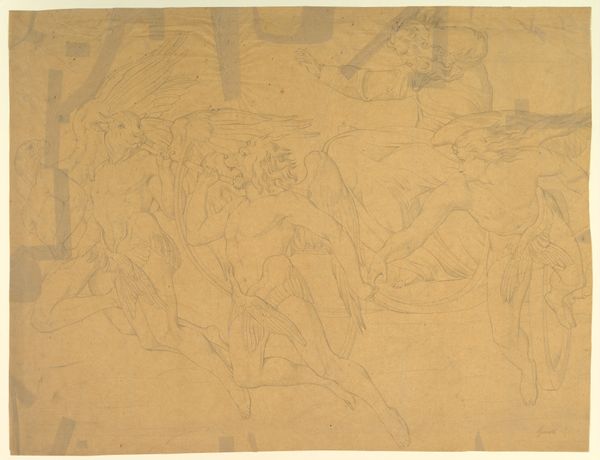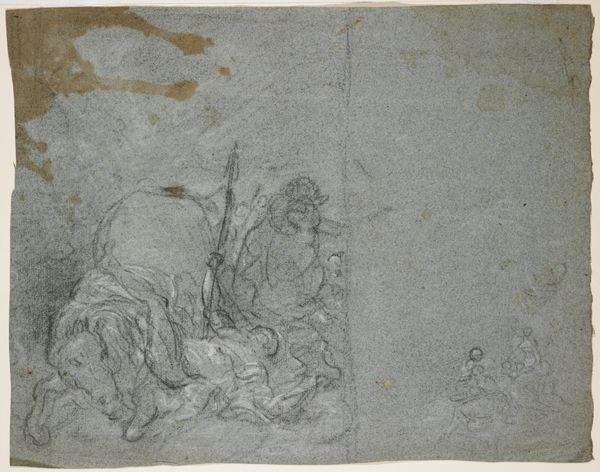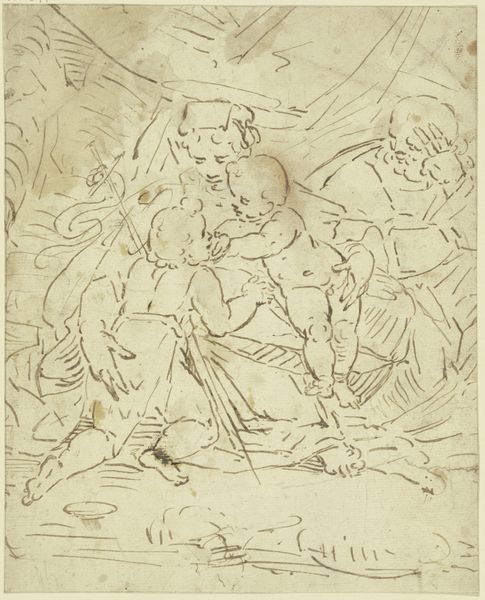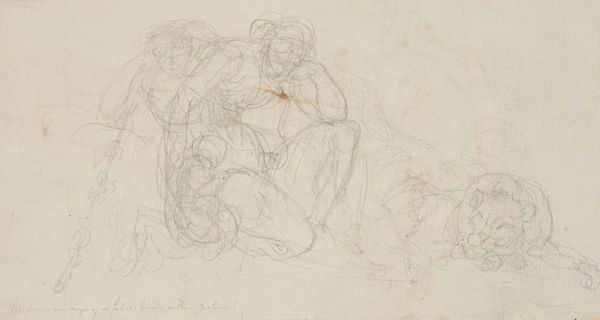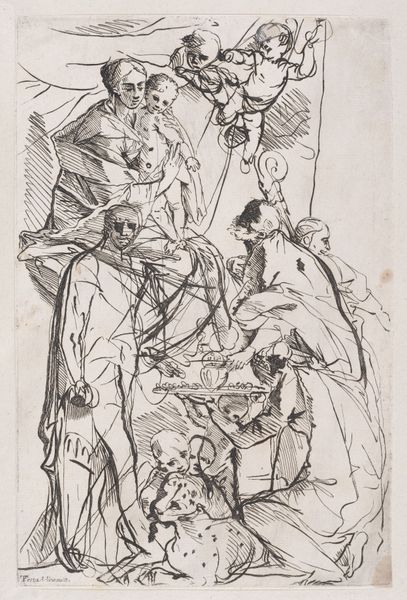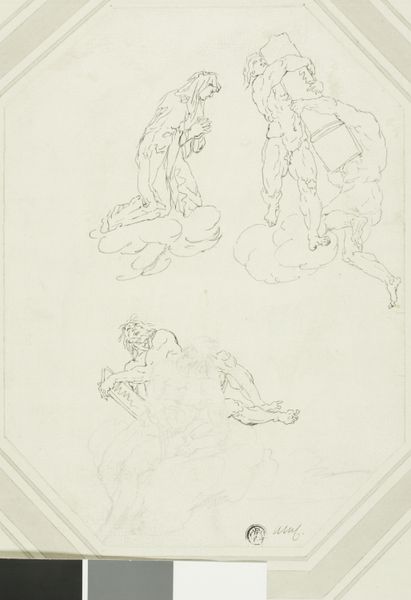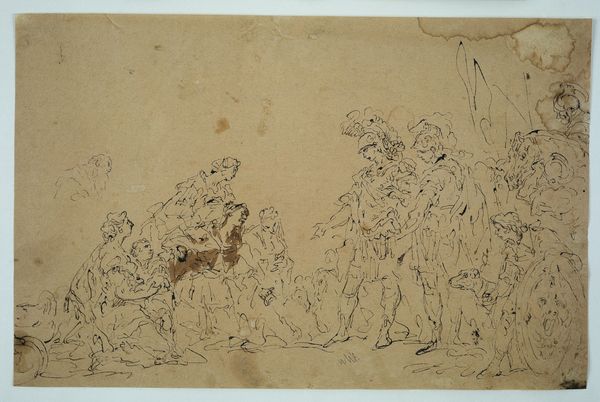
Udkast til scene i Apuleus' "Det gyldne æsel" 4.bog. Røverbandens husholderske fortæller den unge pige myten om Amor og Psyke 1806 - 1809
0:00
0:00
drawing
#
drawing
#
neoclacissism
#
narrative-art
#
figuration
#
academic-art
Dimensions: 256 mm (height) x 335 mm (width) (bladmaal)
Editor: This is a sketch by Nicolai Abildgaard, dating from around 1806-1809. It's called "Udkast til scene i Apuleus' 'Det gyldne æsel'". I see several figures in a somewhat classical composition. It has a very calm, almost meditative feeling, though it also looks a little unfinished. How do you interpret this work, focusing on the forms? Curator: Considering this drawing as an essay in form, observe the lines. They delineate figures clustered in a pyramidal structure, a common neoclassicist compositional strategy. Notice how Abildgaard uses the blue ground not just as support, but as a spatial element, allowing figures to emerge and recede based on the strength and density of the drawn line. Editor: So, it’s the use of line and composition more than the subject that’s important? Curator: Precisely. See how the drapery isn’t rendered for tactile realism but for rhythmic and directional emphasis. It guides your eye around the composition, connecting the figures through a play of repeated folds. Do you notice how this technique reinforces a thematic idea of narrative linkage between characters? Editor: I do see that. It's interesting how the artist balances a sense of clarity with an overall tonal unity, mostly by muting detail and emphasizing shape. It keeps drawing focused on conveying a certain mood. Curator: Indeed, by attending to formal relationships, Abildgaard invokes a certain restraint and measured contemplation in the sketch. The visible and purposeful lack of resolution in areas actually amplifies the parts that are rendered, leading us through relationships and forms. What have you learned about this interplay of technique? Editor: I see now how his deliberate manipulation of line, shape and form heightens the emotional power and elevates the drawing beyond a simple narrative illustration. I’ve been looking at art for years but am starting to really see it as relationships between abstract components. Curator: I'm glad we focused closely on those core visual mechanics in this drawing! I am looking forward to our future work together!
Comments
No comments
Be the first to comment and join the conversation on the ultimate creative platform.
